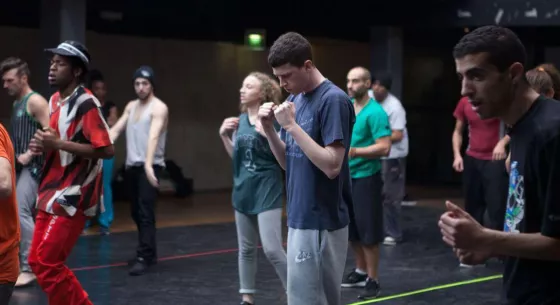Outreach through Science and Art (OSA) is a University of Minnesota student group dedicated to bridging the gaps between the arts and sciences and broadly sharing the connections we uncover. This semester we are inspired by Compagnie Käfig’s Pixel to explore how digital technology helps artists and scientists visualize our world.
Pixel blurs the lines between 2-D (2-dimensional) and 3-D (3-dimensional) space using digital technology. Dancers interact with 2-D projections in 3-D space, alternately flattening themselves into a 2-D world or pulling the projections into a 3-D landscape.
We live and move in a 3-D world, yet we visualize our world mostly through 2-D images, videos, and screens. While 2-D images are easy to record and share, they can’t completely capture the 3-D movements of a dancer or the change in a landscape over time.
Dancers and earth scientists face a similar problem: how can we reconcile 3-D movement in 3-D space with 2-D media? We are trying to answer this question by exploring how motion-capture technology used by earth scientists to record the 3-D shaking of earthquakes can be used to record the 3-D motion of dancers. We’ve adapted computer code used in seismometers to capture a dancer’s movements and map them in 3-D.
Satellite technology is making it easier than ever for earth scientists to watch the earth’s surface move, even allowing them to see volcanoes “inflate” with magma before they erupt. Experiment with a scaled-down version of this technology in our augmented reality sandbox, which will be in the Northrop lobby before Compagnie Käfig performs on Nov 3.
OSA is excited to be engaged in another collaboration with Northrop. Previous collaborations include our Homology of Dance exhibit, which investigated the bones humans share with other animals and accompanied the Alonzo King LINES Ballet’s production Biophony.


